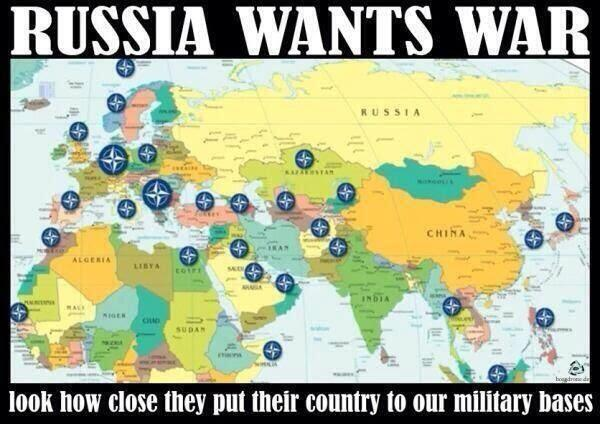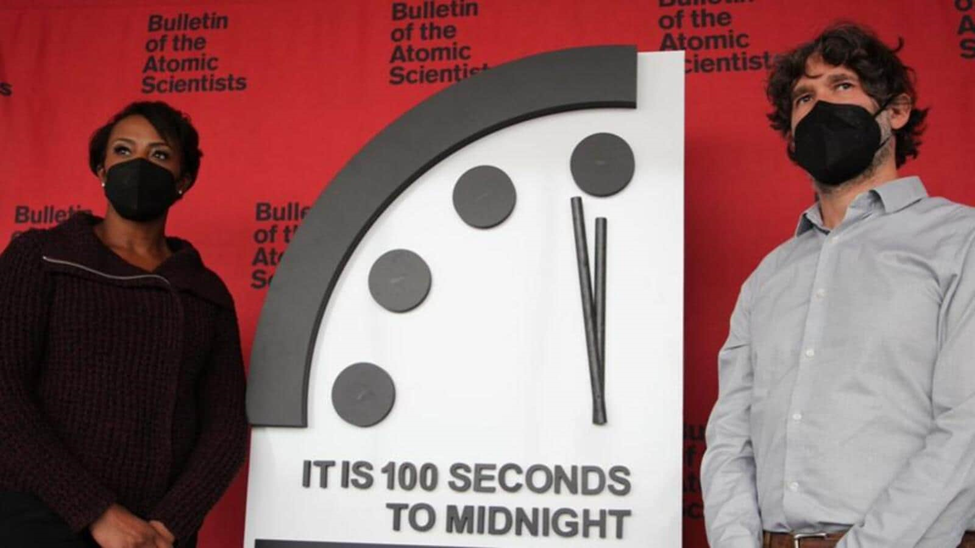Harry Targ
Revisiting
the Cuban Missile Crisis might provide some lessons and warnings for 21st
century peace activists as we reflect on the current drama in Ukraine. The
essay attached below includes descriptions of two competing evaluations of
Kennedy Administration policies during the 1962 crisis. Whatever the
assessment, it was clear that United States policies contributed to a
heightened risk of nuclear war.
The most
popular view which has been advanced by historians and journalists is that the
careful modulation of US policies during the crisis demonstrated the wisdom and
skill of the Kennedy Administration. These included, the narrative suggests,
the careful and appropriate use of American power, including boarding Soviet
naval vessels, flying US aircraft over Soviet territory, and implicitly
threatening nuclear retaliation against the Soviet Union if they did not remove
their missiles from the island of Cuba.
A second
less popular view is that the United States and the Soviet Union acted recklessly
such that the possibility of nuclear war was dramatically increased. This view
suggests that issues of “security,” “spheres of influence,” “appearing strong
and tough,” and “challenging the spread of communism” were used to justify the President’s
willingness to go to the brink of war. Some, for example the journalist I. F.
Stone, suggested that while the Soviets were reckless in placing their missiles
on Cuban soil, it was they who ended the crisis by withdrawing their missiles
and thus avoiding a nuclear war.
Baring in mind
the competing views, the Cuban Missile Crisis may provide lessons for assessing
the Ukraine crisis today. First, former Soviet, now Russian behavior, played a
major role in stimulating in the short run heightened danger of a war, possibly
including nuclear weapons.
Second, the
Cuban Missile Crisis was part of a long-standing dispute between the United
States, the unquestioned global hegemonic power, and a perceived challenger,
the then Soviet Union. In 1962, as today, the United States sought/seeks to
rekindle or maintain its global dominance in a complicated world, one in which
the pursuit of great power dominance is dangerous and wasteful to all.
Third,
crises, such as those involving Cuba and Ukraine, give justification for
military/industrial complexes in both countries to lobby for more and more of
societal resources.
Fourth,
crises give legitimacy to cultures of “great power chauvinism:” in the US case
“American exceptionalism,” defender of “democracy,” the voice of the “free
world,” “the last remaining super-power,” and/or “the indispensable nation.”
Finally, as
to domestic politics, international crises are used to “bail-out” politicians
whose power and legitimacy are being threatened. President Kennedy had been
judged weak after his Vienna meeting with Nikita Khrushchev in Vienna in 1961,
the German/Soviet construction of the Berlin Wall, Soviet support for
anti-colonial movements, and the continuation of the Cuban Revolution.
At home in
the fall of 1962 Democrats feared that they would lose control of the House of
Representatives in upcoming elections. Pundits speculated that JFK’s image at
home was of youth, inexperience, and lack of resolve. The handling and
resolution of the Cuban Missile Crisis changed all that.
And today,
President Biden’s approval ratings are low. His legislative victories are
overshadowed by the image of his failure to achieve his Bring Back Better
program, and the much-publicized conflicts within his own party.
And, it
should be noted, his major bipartisan legislative achievement is the passage of
a $778 billion military budget which is of particular benefit to the sectors of
the military/industrial complex which feed off crises like Ukraine. (After the
Cuban Missile Crisis, the US and the Soviet Union did begin to dialogue about
tension reduction but US military budgets continued their significant increase,
justified by the Vietnam adventure. The US/Soviet competition would be fought
out by an arms race and battles in independent nations-places like Vietnam then
and Ukraine now).
And as I
wrote in the essay below, citing I.F. Stone, the Cuban Missile Crisis was ended
with the Soviet withdrawal of missiles. One hopes that the current leadership
in Russia will take the initiative and reduce tensions that it initiated
because the US record historically has been to exacerbate tensions not reduce
them.
“As I.F.
Stone suggested shortly after the crisis, nuclear war was avoided because the
Soviet Union chose to withdraw from the tense conflict rather than to engage in
it further.”
**********************************************************
Harry Targ wrote
In October 8, 2012 about the Cuban Missile Crisis:
THE CUBA STORY: THE BAY
OF PIGS TO THE MISSILE CRISIS
https://heartlandradical.blogspot.com/2012/10/the-cuba-story-bay-of-pits-to-missile.html
https://theragblog.blogspot.com/2012/10/harry-targ-from-bay-of-pigs-to-missile_17.html?m=0
“In the
missile crisis the Kennedys played their dangerous game skillfully….But all
their skill would have been to no avail if in the end Khrushchev had preferred
his prestige, as they preferred theirs, to the danger of a world war. In this
respect we are all indebted to Khrushchev. (I.F. Stone, “What If
Khrushchev Hadn’t Backed Down?” in In a Time of Torment, Vintage,
1967).
The
Kennedy Administration Goes to the Brink of Nuclear War
The period
between the failed Bay of Pigs invasion, the announcement of the Alliance of
Progress economic assistance program, and the Cuban Missile Crisis was one of
escalating hostilities. Fidel Castro declared Cuba a Socialist state. The
United States pressured members of the Organization of American States (OAS) to
expel Cuba. The CIA began campaigns to assassinate the Cuban leader and
President Kennedy initiated the complete economic blockade that exists until
today. In addition, Castro warned that the U.S. was continuing to plan for
another invasion. The Soviet Union began providing more economic and military
support to the Cubans, including anti-aircraft missiles and jet aircraft.
In October,
1962, U.S. spy planes sighted the construction of Soviet surface-to-air missile
installations and the presence of Soviet medium-range bombers on Cuban soil.
These sightings were made after Republican leaders had begun to attack Kennedy
for allowing a Soviet military presence on the island. Kennedy had warned the
Soviets in September not to install “offensive” military capabilities in Cuba. However,
photos indicated that the Soviets had also begun to build ground-to-ground
missile installations on the island, which Kennedy defined as “offensive” and a
threat to national security.
After
securing the photographs Kennedy assembled a special team of advisors, known as
EXCOM, to discuss various responses the United States might make. He excluded
any strategy that prioritized taking the issue to the United Nations for
resolution.
After much
deliberation EXCOM focused on two policy responses: a strategic air strike
against Soviet targets in Cuba or a blockade of incoming Soviet ships coupled
with threats of further action if the Soviet missiles were not withdrawn. Both
options had a high probability of escalating to nuclear war if the Soviet Union
refused to back down.
High drama,
much of it televised, followed the initiation of a naval blockade of Soviet
ships heading across the Atlantic to Cuba. Fortunately, the leader of the
Soviet Union, Nikita Khrushchev, sent notes to the President that led to a
tacit agreement between the two leaders whereby Soviet missiles would be
withdrawn from Cuba and the United States would promise not to invade Cuba to
overthrow the Castro government. In addition, the President indicated that
obsolete U.S. missiles in Turkey would be disassembled over time.
Most
scholars argue that the missile crisis constituted Kennedy’s finest hour as statesman
and diplomat. They agree with the administration view that the missiles
constituted a threat to U.S. security, despite Secretary of Defense Robert
McNamara’s claim in EXCOM meetings that the missiles did not change the
strategic balance between the United States and the Soviet Union. Most of these
scholars have agreed that the symbolic value of the installation of Soviet
missiles could have had grave consequences for U.S. “credibility.”
Given the
importance of the missiles, leading social scientists have written that the
Kennedy team carefully considered a multitude of policy responses. EXCOM did
not ignore competing analyses, as had been done in the decisional process prior
to the Bay of Pigs. The blockade policy that was adopted, experts believe, constituted
a rational application of force that it was hoped would lead to de-escalation
of tensions. All observers agreed that the United States and the Soviet Union
had gone to the brink of nuclear war. Even the President estimated that there
was a fifty percent probability of full-scale nuclear war.
In the end
the Soviets withdrew their missiles. Analysts said the Soviet Union suffered a
propaganda defeat for putting the missiles on Cuban soil in the first place and
then withdrawing them after U.S. threats. Khrushchev was criticized by the
Chinese government and within a year he was ousted from leadership in the
Soviet Union.
In the light
of this U.S. “victory,” Kennedy has been defined as courageous and rational.
The real meaning of the Cuban Missile Crisis, however, is different, even
fifty years after the event. The crisis actually suggests that the United
States quest to maintain and enhance its empire would lead it to go to any
extreme, even nuclear war, to defend the interests of capitalism. To avoid
serious losses, whether symbolic or material, for capitalism, any policy was
justified.
Further, in
terms of U.S. politics, Kennedy was calculating the effects of the missiles on
the chances for his party to retain control of Congress in 1962. A second “defeat”
over Cuba (the Bay of Pigs was the first) would have heightened the
opposition’s criticisms of his foreign policy.
Finally, in
personal terms, Kennedy was driven by the need to establish a public image as
courageous and powerful in confronting the Soviets. Khrushchev had spoken
harshly to him at a summit meeting in Vienna in 1961 and Castro had been
victorious at the Bay of Pigs. The President’s own “credibility” had been
damaged and a show of force in October, 1962, was necessary for his career.
Because of
imperialism, politics, and personal political fortunes, the world almost went
to nuclear war fifty years ago. As I.F. Stone suggested
shortly after the crisis, nuclear war was avoided because the Soviet Union
chose to withdraw from the tense conflict rather than to engage in it further.
National
Security Archives files referred to in an earlier blog suggest, “the historical
record shows that the decisions leading to the crisis which almost brought
nuclear war have been repeated over and over again since the early
1960s” ( www.gwu.edu/~nsarchiv/). The danger of the unabashed and
irresponsible use of force and the legitimation of the idea that diplomacy can
be conducted using nuclear weapons and other devastating weapons systems still
represents a threat to human survival.
These
comments were adapted from Harry Targ, Strategy of an Empire in Decline:
Cold War II, 1986. It is the third essay in a series on “The Cuba Story”
available at www.heartlandradical.blogspot.com.”










